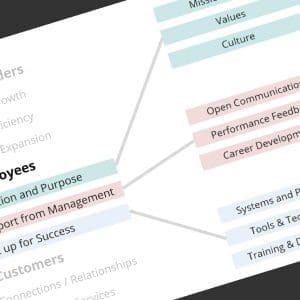Sales and the Gantt
“Why exactly does he want to meet again?”
I could sense the exasperation in Karl’s voice, faintly; the sales manager wasn’t about to slip out of his professional demeanor over some perceived technical triviality. But for the fact that the request was coming from his newly-hired PMI maven, he probably would have found a convenient excuse to skip the invite.
“I just don’t understand why we need this meeting … the projects are moving forward, we are meeting regulary, the team is communicating status – what am I missing?”
Karl had called me in to his office to help decipher these requests, and I was searching for the analogy that would let me get to my next meeting. “Ah”, I explained, “you are using the terms ‘project’, ‘tasks’, and ‘communicating’ … somewhat colloquially”. The familiar roll of the eyes – I am talking in high concepts, pausing as I speak, trying to compose precise prose on the fly – never a good idea. Karl is checking his vibrating iPhone and wondering if he can make his own next meeting – but we both know there is a nugget of truth here, just have to find the right words.
“Your PM is looking for detailed tasks and dependencies, right? Like a recipe for building a road, constructing a house – a repeatable set of instructions, honed over time, that produce a predictable result. That model doesn’t fit this project; it’s assumes full knowledge of the path to the end … but that doesn’t really apply with a consumer-facing project like this …”. A glimmer of recognition …

“It’s like asking you for a detailed task plan when you are negotiating the big contract – there is a general path, for sure, but your team always has to find the way to close by navigating the relationships and complexities. Could you write down the steps for a trainee to follow? Of course not – and that’s how your team runs its projects. Not right or wrong – just different.”
And then the lights came on. “Thank You!”, said Karl, “that’s what I needed to hear, simply put, I understand now. I can deal with this meeting now, I’m good .. gotta go ..”
Engineering, Excel, and Expectations
“Why is my machine freezing up? Don’t you know anything about IT?”
I must admit, the 3D-spinning rendition of the button assembly was the kind of flashy technology that people like to stuff a CV/portfolio with – but who am I kidding? I can hack file formats and automate PDF renditions, but debugging drawing layers and block interference in a 2M, 15-page technical drawing?
“Look, we install this stuff, but we can’t run it for you. I put Excel on the desktops of everyone in Finance, but I don’t write their spreadsheets for them.”
Deadline tension has a way of stressing the plasticity of common sense, and Mike’s expectations were a little out of true here. He actually laughed at that one – but the machine was still poking along, so he returned to the Task Manager and his Google searches, a tad less grumpy.
Executives and the Blank Slate
“There has to be an easier way”, said Sandra, the impatient executive.
Unfortunately there wasn’t; like most mature ERP implementations, earlier software didn’t quite cover the requirements list, and a bit of customization gets added here, here, and here. And, as entropy reliably applies to business process and code repositories, that stuff gets complicated after 10 years – hence our suggestion to reimplement the base ERP for this latest strategic acquisition.
“Why can’t you just tweak it?”
I’ve come to despise that word – co-opted from the hardware hacker’s lexicon, it has become a common term used by the non-technical to minimize and rationalize a patch, exception, and/or other workaround to deliver results with the minimum amount of near term effort. And, since IT is woefully unable to glibly quantity TCO, the tweaks persist.
But not in this case; since we had the opportunity [acquisition budget / slush fund] to reimplement [… if I knew then what I know now …], the suggested approach was to create a new instance, model the business in a clean system, then “convert” the existing data into the new instance. Manageable, simple, some time involved – completely understood. However, our “tough customer” wanted to understand why we would do it that way, as opposed to “fixing” the application in place.
“You can start with a clean sheet of paper, or you can keep erasing over the old one”.
What a reaction – silent stare, then “Wow, that’s perfect – concise, complete – I get it!”. The mood lightened noticeably; Sandra couldn’t believe I had come up with that one one my own.
The Vendor Rep Brings Me Down to Earth
My own Blackberry buzzes, snapping me out of a self-satisfied smile. And my drinking partner for the evening snaps me back to reality, out of the reverie these old war stories had brought on.
“Yes, Jim, that’s how we are taught to close the sale. Make the solution relevant to the decision maker, using examples and analogies from their own experience – makes it easier to get over the objections”.
“Gee thanks”, I griped, “thought I had stumbled upon a secret recipe there.”
But then our conversation turned to the creative application of styles and approaches from one discipline to another; mash-ups in the change management world, as we passed the time until the rush hour subsides.






This Post Has 0 Comments